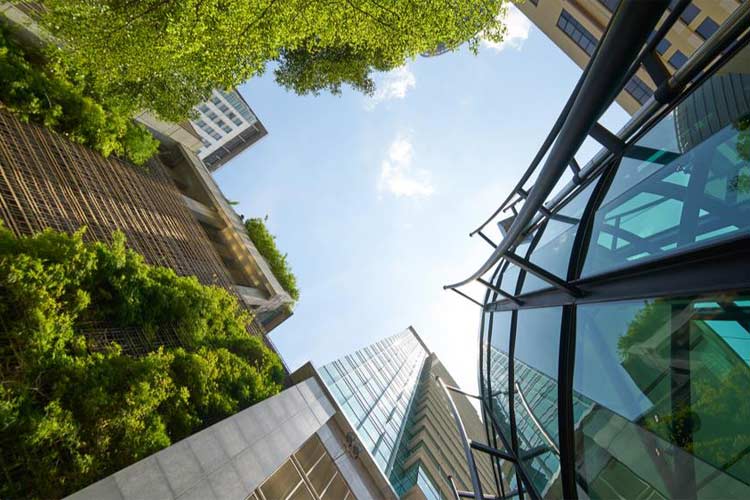

Hussain Najwani, Founder & MD of Inlead Projects Management talks about the future of Retrofitting and how to enable the best results for Building Owners.
July 06, 2022 | Megha S Anthony | Sultanate of Oman | Facilities Management

Building sustainability has become an ever-important topic. Modifying old buildings for optimum energy consumption is crucial in today’s-built environment. Industry reports estimate that approximately two-thirds of these existing buildings will remain operational until 2050. Hence, governments must invest in sustainable retrofitting to ensure these buildings become energy-efficient and reduce their impact on global carbon emissions.
REM Times talks to Hussain Najwani, Founder and Managing Direction of Inlead Projects Management, in Muscat, Sultanate of Oman on the future of retrofitting and the importance of energy-efficient buildings. Najwani has immense experience in the construction industry. He manages residential, commercial, mixed-use, and masterplan developments worth over 100 Millon USD. He is also the author of Udemy's Course "The Complete Guide to Construction Management" with over 2700 students enrolled from more than 130 countries.
Future of Retrofitting
The World Future Energy Summit estimates that the international retrofitting industry amounts to $34bn, with the US, Europe, and China accounting for 90% of the global market. Even though the Middle East retrofitting industry is still relatively nascent, it is seeing concerted focus from governments within the region through many refurbishment projects and overhauls of older buildings. This is primarily being done to reduce energy consumption and minimise carbon footprints within the region.
“The use of retrofitting offers a wide range of applications including achieving sustainable targets (such as reducing energy consumption), increasing the building lifespan (by strengthening the structure for example), and protecting against external factors (such as strengthening the structure to endure earthquakes) all without the traditional build or break scenarios. Retrofitting offers flexibility and alternate economic solutions to an industry that is prone to high investments, making it a sound potential for the future of real estate businesses,” says Najwani.
Energy Audits benefit Legacy Buildings
As buildings age, costs typically increase due to rising expenditure on maintenance, repairs, and general operations – and for older buildings, this is often aggravated by substandard or non-existent façade systems and building insulation, resulting in poor energy efficiency. One of the best ways to analyse these are via energy audits. Energy audits are typically conducted to identify the current building consumption of water, power, and other resources. This assessment is necessary to identify the extent such buildings need to be modified to achieve today’s sustainability targets. Says Najwani, “One of the main growing aspects of retrofitting technologies is the achievement of sustainable targets such as reducing the consumption of water and energy. To achieve this target, an initial stage of building energy assessment must be carried out; a natural flow for the process to identify the problem and then adopt a solution. This case is seen highlighted in legacy buildings (old or historical buildings; those without updated building technologies) as such buildings were built with the technologies and mentality of their times, not necessarily carrying the concerns of sustainability in mind.”
Based on this assessment, potential retrofitting solutions may be proposed. Energy audits serve as a very important step in the process, similar to the diagnosis of a doctor before prescribing a medicine.
Improving Building Management Performance
Energy audits and retrofitting technologies aim to solve a problem viewed in buildings. This problem is not only in the unsustainable use of energy but also in the lack of consumption monitoring. Therefore retrofitting solutions are advised to learn from past lessons and provide a method of monitoring in addition to upgrading/replacing a building’s systems and technologies. This involves the installation of tracking devices, meters, and similar devices. All of these measures ultimately serve the performance of building management. “We need to shift our perception of buildings from static elements to live items; live by the active lives we have inside buildings. Buildings change in terms of their energy consumption, waste production, and water usage over time depending on the tenants of such buildings, and the lifestyle those tenants adopt. The use of monitoring and tracking devices provides live data on the building status, and this can easily trigger necessary retrofitting solutions if the consumption data for example cross acceptable thresholds,” explains Najwani.
Najwani recommends a few measures for professionals in the field. He says at the start begin with those that do not carry significant cost impact but do cause major reductions in the energy consumption of a building. “I see this as a free gain, a representative of our least care for environmental causes. For example, replacing common areas / heavy use areas sanitary with fittings are more conservative with the capacity of water flow may not necessarily cost much, but will surely reduce the wastage of water,” he adds.
Other similar solutions may be adopted for lighting control, heating/cooling, and other systems within a building. “This of course does not mean that we should not conduct more advanced retrofitting processes, however, such processes must be done in a professional manner considering the entire process starting from energy auditing, feasibility analysis, engineering design, and finally construction. This detailed process should be conducted by professionals in the field in cases where it is viewed as being helpful to the building, society, and investors. Ultimately, achieving an economic investment is itself a target of sustainable development!” he says.
For now, retrofitting of buildings is still gaining momentum. However, the focus should be on raising more awareness, changing mindsets, and piloting success stories. This is a game-changer in terms of cost reduction and carbon footprint benchmarking. As a building owner, it’s an opportunity as much as a social responsibility to retrofit your building such that it doesn’t consume too much energy.